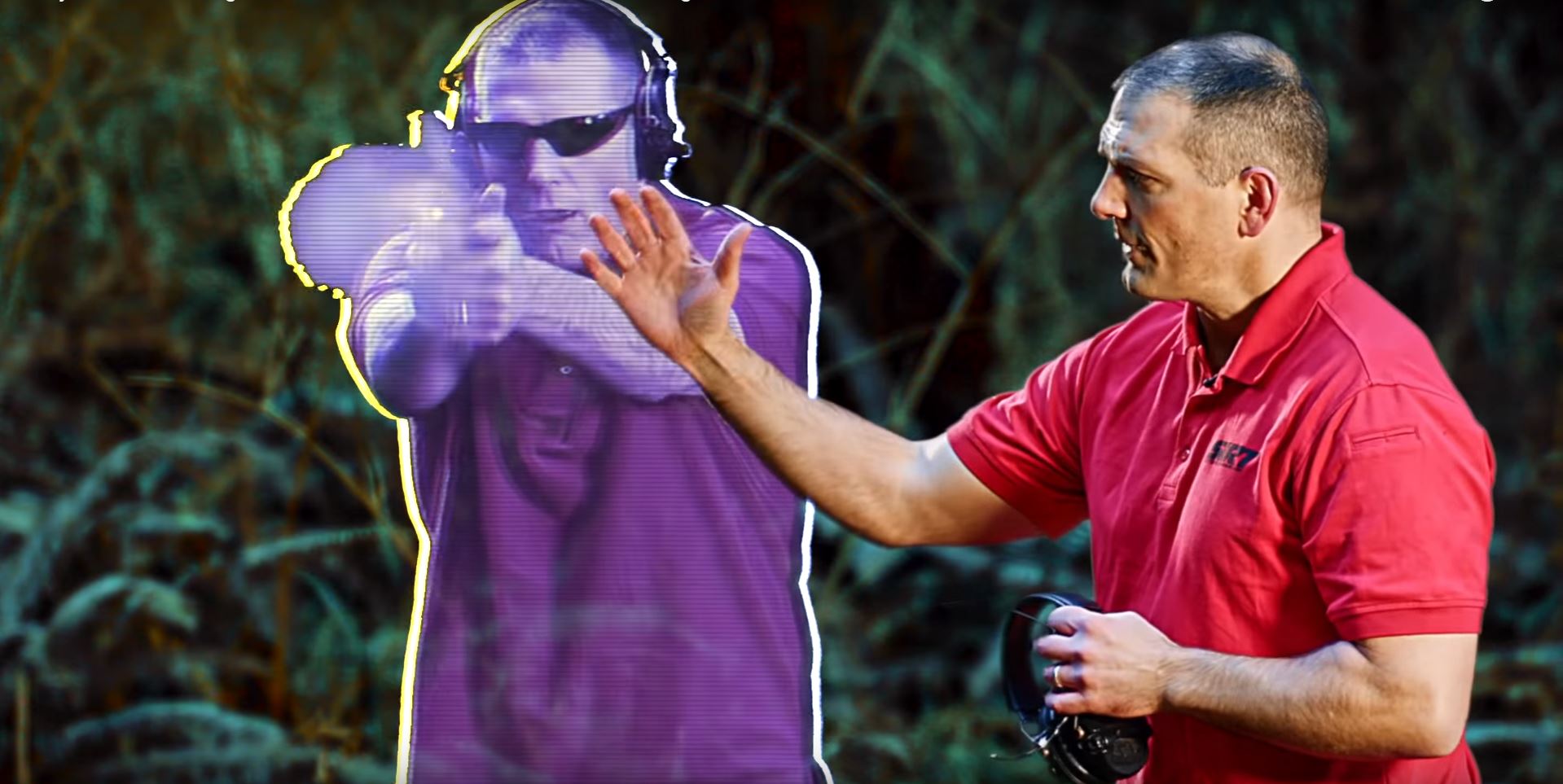Transitioning from target to target is simple in theory, but have you thought about the complex ways your body moves just to rotate? Mastering control of your body will allow you to improve the quickness and accuracy of your shots. For this training, we will be focusing on using our thoracic vertebrae, hips, and knees. The thoracic vertebrae make up the section of your back from the bottom of your ribs to the to top of your ribs.
It’s important to lead your muscles with your eyes. At :45 in the video, Mike demonstrates a drill showing how your body should follow. In this drill, Mike starts with a narrow transition. For this, he will keep his lower body stable and engage the targets by just moving his upper body. Then, when he switches to the wider transitions, he will use his hips and knees for the larger motions, while still using his upper body for the fine tuning.
Notice how Mike violently drives his body to the target. When going through a wide transition, he doesn’t rotate with a constant speed. He accelerates towards the target before decelerating in the last 20% of the way. This keeps him quick and nimble. It sounds complex but if you just let your body follow your eyes you will find it comes easily with practice.
Would you like us to send you more good stuff like this?
We can send you our newsletter. Just fill this quick form out.

I am a firearms instructor and the graphics in this demonstration really complimented instruction. Great teaching and presentation.
Mike, Love this video… Thanks, Mark Brent
With the 90 degree transition, one can save time by keeping the guy raised so there is no waisted time/motion raising the gun and reacquiring the sights. Good illustrative video. Thanks
Thanks for sharing. In that spirit, I’ll share that in my system, if you have to transition to a target more than 45 degrees away (and certainly something that is 90 degrees away), you retract the pistol and move your relevant leg forward and clockwise/counterclockwise until you are basically lined up on the new target in retension. Then you punch out to the new target. I am guessing you believe your method is faster. From my experience, lining up with foot movement has the advantage of allowing for better target ID, not flagging what is between the first and second targets and actually is more accurate. I understand the deceleration you describe is a way to control the accuracy issue, but when you punch out from retension, I think you tend to get your natural point of aim. YMMV. Thanks again.
Great visuals. I agree that compressing the gun helps reduce over rotation and is a natural movement on such a huge transition. Great instruction as usual.
good video thanks